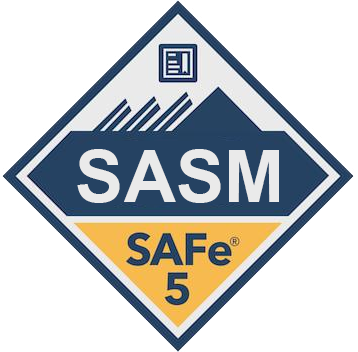The Importance of Responsiveness in Agile Delivery: Exploring Effective Approaches
Introduction
Agile delivery has revolutionized project management in the software development industry, enabling teams to deliver high-quality products faster and adapt to changing requirements. Responsiveness, a key characteristic of agile methodologies, ensures that projects remain on track even when faced with unforeseen challenges. In this article, we will delve deeper into the concept of responsiveness in agile delivery and provide an illustrative example to highlight its significance.
Understanding Responsiveness in Agile Delivery:
In the context of agile delivery, responsiveness refers to the team’s ability to adapt swiftly and effectively to changes in project requirements, stakeholder expectations, or market shifts. It goes beyond simply following a predefined plan, as agile teams prioritize flexibility and continuous improvement, accommodating changes without negatively impacting project deliverables or timelines.
Responsiveness Matters:
1. Customer Satisfaction: Responsiveness helps agile teams align their deliverables with evolving customer needs. Teams can respond proactively to valuable feedback, improving the chances of meeting customer expectations and increasing overall satisfaction.
2. Quick Change Management: In agile delivery, changes are welcomed as opportunities for improvement rather than disruptions. Responsiveness allows agile teams to respond quickly to emerging requirements or scope changes, minimizing the time and resources wasted on outdated solutions.
3. Mitigating Risks: In an ever-changing business environment, responsiveness is strategically vital. Agile delivery encourages regular communication, collaboration, and adaptive planning, preventing project risks from escalating into costly and unmanageable issues.
Example for Boosting Responsiveness in Agile Delivery
To illustrate the importance of responsiveness in agile delivery, consider a software development project tasked with building an e-commerce platform for a client. During the development cycle, the client realizes that their target audience has shifted preferences towards mobile shopping experiences. To remain responsive, the agile development team quickly adapts to this change by reprioritizing the user interface design and allocating more resources to mobile optimization.
The team identifies potential bottlenecks and initiates discussions with relevant stakeholders, including the client and UI/UX designers. Through continuous collaboration and close communication with the client, the agile team can embrace the change, ensuring all aspects of the e-commerce platform are mobile-responsive without significantly affecting the overall project timeline.
This example demonstrates how responsiveness within agile delivery empowers teams to effectively respond to changing market dynamics, resulting in an improved end product that caters to the evolving needs of the customer.
Let’s say a software development team is following an agile delivery approach to develop a mobile application. The team has a backlog of user stories listed in their project management tool with estimated effort points for each story. The team works in two-week sprints and aims to deliver a potentially shippable increment of the application at the end of each sprint.
During the first sprint, the team was able to complete 10 user stories with a total effort estimation of 40 points. The stakeholders reviewed the delivered increment and requested some changes and additional features. The team quickly adapted to the stakeholders’ feedback, adjusted their backlog, and added 4 new user stories to the upcoming sprint.
In the second sprint, the team completed 12 user stories with a total effort estimation of 50 points, including the additional stories. Once again, the stakeholders reviewed the increment and provided feedback to further fine-tune the application.
Calculation:
To measure the responsiveness of the agile delivery, we can calculate the team’s velocity. Velocity is the average number of effort points completed by the team in each sprint.
In this example, the first sprint involved completing 10 user stories with a total effort of 40 points, resulting in a velocity of 40/10 = 4 points per sprint.
In the second sprint, the team completed 12 user stories with a total effort of 50 points, including the additional stories. Therefore, the velocity for the second sprint is 50/12 = 4.17 points per sprint.
By comparing the velocities of different sprints, we can assess the team’s responsiveness in delivering increments. In this case, the team’s velocity increased slightly from 4 points per sprint in the first sprint to 4.17 points per sprint in the second sprint, indicating that the team adapted well to stakeholder feedback and delivered increased Velocity is just one metric to measure responsiveness; there are other metrics like lead time, cycle time, and burndown charts that can provide more insights into the agile delivery process.
The various approaches agile teams can follow to measure the Responsiveness of agile delivery
There are several approaches that agile teams can follow to measure the responsiveness of agile delivery. Some of these approaches include:
1. Lead time: Lead time refers to the time it takes for a feature or user story to go from the initial request to being delivered to the customer. By measuring lead time, agile teams can assess how quickly they are able to respond to customer needs and deliver value.
2. Cycle time: Cycle time is the duration it takes from when work begins on a feature or user story to when it is completed and ready for deployment. By measuring cycle time, agile teams can evaluate how efficiently they are able to complete work and respond to changing requirements.
3. Cumulative Flow Diagrams (CFDs): CFDs provide a visual representation of the flow of work in an agile project. By analyzing CFDs, teams can identify bottlenecks, visualize work in progress, and monitor the responsiveness of their delivery process.
4. Velocity: Velocity is a measure of the amount of work a team is able to complete in a given time period, typically measured in story points or some other unit of effort. By tracking velocity, teams can gauge their capacity for delivering value and respond to changing priorities.
5. Burn-up charts: Burn-up charts track the progress of work over time, showing the amount of work completed and remaining. By analyzing burn-up charts, teams can assess their responsiveness to delivering value and adapt their plans accordingly.
6. Customer satisfaction surveys: Agile teams can also directly measure responsiveness through customer satisfaction surveys. By gathering feedback from customers and stakeholders, teams can assess how well they are meeting customer needs and respond to any issues or concerns.
It is important for agile teams to regularly measure and evaluate their responsiveness using one or more of these approaches to ensure they are continuously improving their delivery process and delivering value to their customers.
key points related to the Responsiveness of agile delivery
Some other key points related to the responsiveness of agile delivery include:
1. Continuous feedback: Agile delivery emphasizes the importance of obtaining frequent feedback from stakeholders, users, and customers throughout the development process. This feedback helps teams adapt and respond to changing needs and requirements promptly.
2. Iterative approach: Agile delivery is based on an iterative approach, where the development process is divided into short iterations or sprints. By delivering working software in small increments, teams can quickly respond to changes and incorporate feedback in subsequent iterations.
3. Flexibility: Agile teams prioritize flexibility and adaptability over following a rigid plan. They are open to changing requirements and priorities, and can easily adjust their plans and deliverables accordingly.
4. Empowered teams: Agile approaches promote self-organized and cross-functional teams. These teams are empowered to make decisions and take ownership of their work, which enables them to respond quickly to any issues or changes that may arise.
5. Continuous improvement: Agile delivery encourages teams to reflect on their processes and practices regularly. Through retrospectives and continuous improvement initiatives, teams identify areas of improvement and make necessary adjustments to enhance their responsiveness.
6. Collaborative communication: Effective communication and collaboration among team members, stakeholders, and customers are crucial in agile delivery. Regular meetings, such as daily stand-ups, help in keeping everyone aligned and informed about the progress and any changes that may arise.
7. Use of tools and automation: Agile teams often rely on various tools and automation to facilitate their work and improve responsiveness. These can include project management software, collaboration tools, continuous integration/continuous delivery (CI/CD) pipelines, automated testing frameworks, and more.
8. Embracing change: Agile delivery recognizes that change is inevitable and, rather than resisting it, embraces it as an opportunity for improvement. Teams are encouraged to be proactive in identifying and responding to changes, rather than waiting for them to cause disruption.
9. Lean principles: Agile delivery often incorporates lean principles, such as minimizing waste and maximizing value. By focusing on delivering the highest value features early on, teams can respond better to changing priorities and customer needs.
10. Early and frequent releases: Agile delivery promotes the concept of releasing early and often, allowing teams to gather feedback from stakeholders and customers quickly. This allows for faster adjustments and course corrections, enhancing responsiveness.
Conclusion
Responsiveness is a crucial attribute in agile project delivery, allowing teams to effectively handle complex projects. By being open to change, consistently involving stakeholders, and using a flexible approach, agile teams can quickly adapt and provide value, even in unpredictable situations. Fostering a culture of responsiveness within agile practices empowers organizations to stay competitive. It enables them to deliver high-quality products that align with customer expectations in the ever-changing landscape of business.
For more posts like this follow Agile Digest social Pages or subscribe to our newsletter:
Wesbite: https://agiledigest.com/
Facebook: https://www.facebook.com/agiledigest/
LinkedIn: https://www.linkedin.com/company/agiledigest/
Youtube: https://www.youtube.com/@AgileDigest








































































